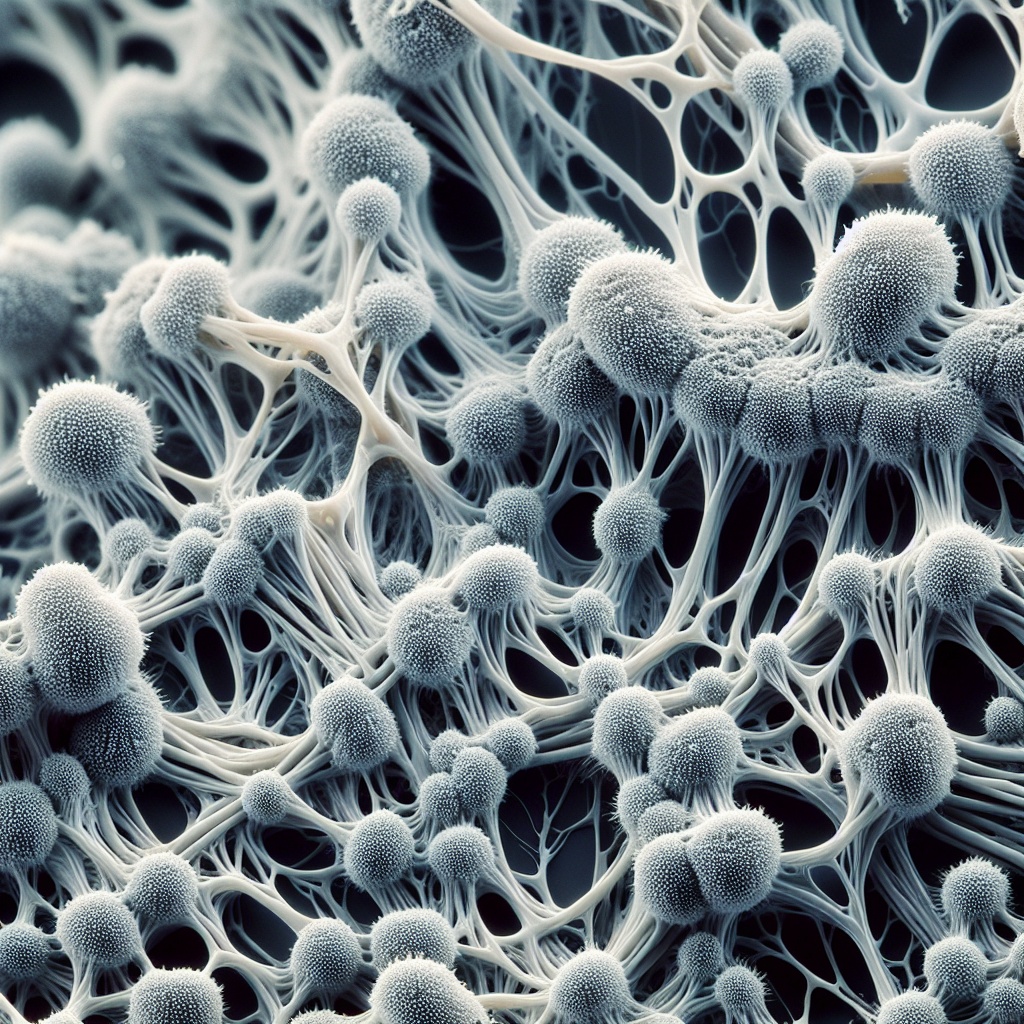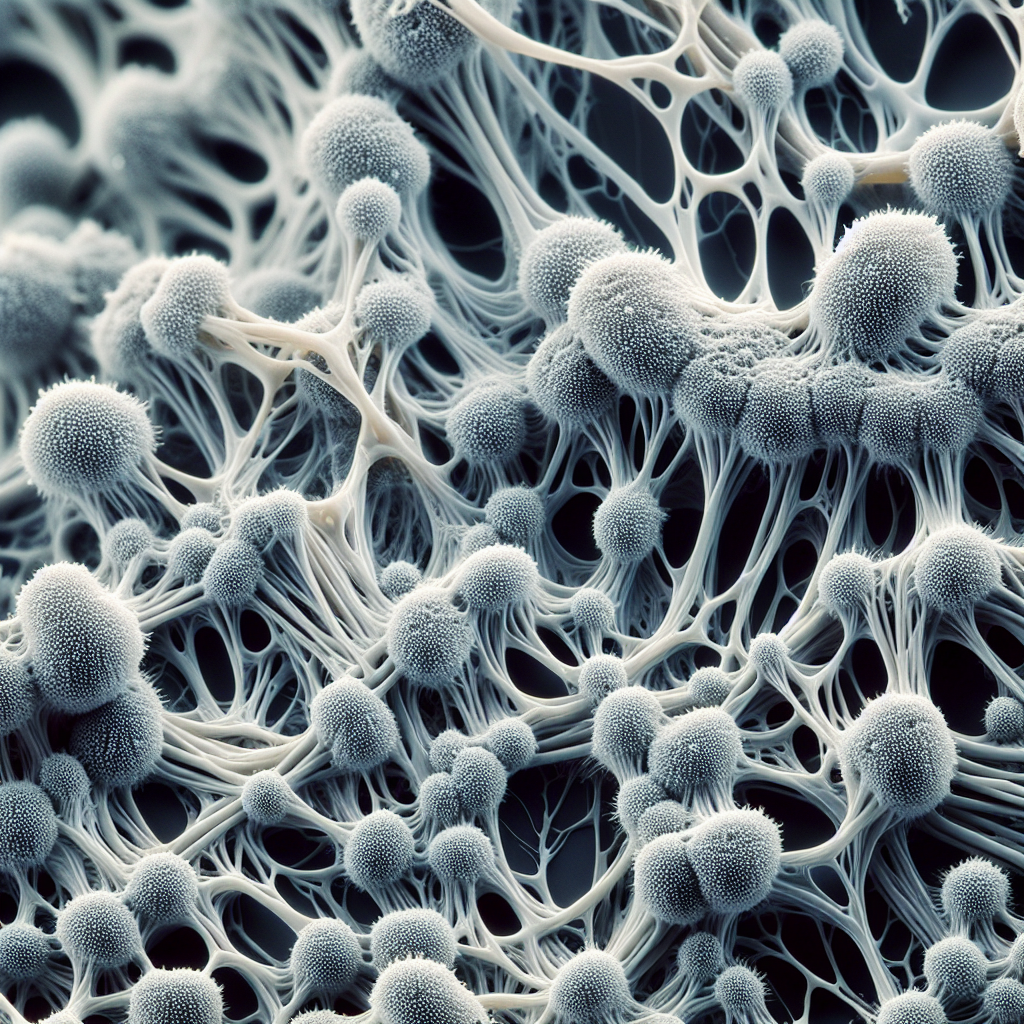In this comprehensive piece, “Understanding the Effects of Grey Mycelium Contamination,” you will embark on an enlightening journey to explore the ramifications of grey mycelium infection. This form of contamination, although often overlooked, poses severe threats to the health of plants and overall agricultural ecosystems. As an increasing concern facing today’s botanical world, a deeper awareness and comprehension of this issue is crucial for anyone involved or interested in agriculture and plant biology. Find answers to the nature of grey mycelium, its harmful impact, and prevention approaches that can help mitigate the potential damage caused by this widespread fungal menace.

Understanding Grey Mycelium
Definition of Grey Mycelium
Grey mycelium is a type of fungus characterized by its grey filamentous structure, commonly identified in various species of mushrooms as well as molds. It is a vital component of the fungal organism, much like a plant’s root system, absorbing nutrients from the surrounding environment to sustain the fungi.
Characteristics of Grey Mycelium
The grey mycelium consists of hyphae, or thread-like structures, that create a dense, tangled mass called a mycelial mat. Its color can range from light to dark grey. The ability to produce and spread spores rapidly, a massive reproductive capacity, and a wide ecological tolerance are main features of grey mycelium.
Types of Grey Mycelium Species
There are a plethora of grey mycelium species present in nature, each with different characteristics and growth environments. Some form mutually beneficial relationships with plants, while others are parasitic, causing decay and disease in plants and crops.
Grey Mycelium Contamination: An Overview
The Process of Grey Mycelium Contamination
Contamination by grey mycelium typically starts with the dispersion of fungal spores. The spores land on a suitable host, such as plants, soil, or food items, and germinate, forming hyphae. These hyphae grow and expand, forming the grey mycelium mat and consuming nutrients from the host, leading to decay or disease.
Factors that Foster Grey Mycelium Contamination
Moist and humid conditions, poor hygiene, improper storage, and inadequate pest and disease management practices can all contribute to the proliferation and spread of grey mycelium. Furthermore, inadequate disposal of diseased plant material may also lead to the spread of grey mycelium.
Signs of Grey Mycelium Contamination
Signs of grey mycelium contamination commonly include changes in the appearance, texture, and smell of the infected host. These might manifest as discoloration, a typical moldy scent, and the visible presence of the grey mycelium mat on the surface, particularly in the case of food crop contamination.
The Biological Mechanism Behind Grey Mycelium Contamination
How Grey Mycelium Spreads
Grey mycelium tends to spread through the expulsion of billions of microscopic spores which can be carried by wind currents, insects, animals or even vehicular traffic. They can also be transmitted via soil, water, and infected plant material.
Grey Mycelium’s Survival Mechanisms
The grey mycelium possesses an exceptional survival mechanism. Its spores can endure harsh environmental conditions like drought for long periods. Besides, it may also produce toxins that inhibit the growth of competing microorganisms in its vicinity.
Biological Impact of Grey Mycelium on Host Organism
The biological consequences of grey mycelium on host organisms revolve around nutrient depletion, damage to cells detrimental to growth and development, and potential spread of toxins that can cause diseases. For plants especially, this can lead to stunted growth, wilting, and ultimately, death.
Effects of Grey Mycelium Contamination on Agriculture
Economic Impact of Grey Mycelium Contamination
Grey mycelium contamination can have severe economic consequences for agriculture. Crop losses due to grey mycelium contamination can significantly reduce yield, thus impacting farmers’ earnings and escalating costs for treatment and control measures.
Effects on Crop Yield and Quality
Infected crops may display diminished vigor and yield, compromising the quality of the produce. In extreme cases, the crops may become unmarketable due to visible contamination or the presence of mycotoxins that render the produce unsafe.
Grey Mycelium Contamination in Different Crop Types
Although grey mycelium can infect a variety of crops, certain types may be more susceptible based on specific factors such as their growth conditions and innate resistance. This includes species like grains, fruits, and vegetables.

Impact of Grey Mycelium Contamination on Human Health
Potential Toxins Produced by Grey Mycelium
Mycotoxins, potent toxins produced by grey mycelium, can adversely impact human and animal health. Exposure can occur through ingestion of contaminated food, inhalation of spores, or contact with infected material.
Direct Health Risks to Humans
Direct health risks associated with grey mycelium include various respiratory issues, allergic reactions, and mycotoxicosis – a toxic condition resulting from ingesting mycotoxins. In extreme cases, certain mycotoxins are linked to carcinogenic effects.
Indirect Health Risks Linked to Contaminated Produce
Indirect health risks arise from consuming contaminated produce, which could result in mycotoxin poisoning. Symptoms can range from mild (nausea, vomiting) to severe (organ failure, neurological damage), depending on the level and duration of exposure.
Methods of Testing for Grey Mycelium Contamination
Laboratory Testing for Grey Mycelium
Laboratory testing, which may utilize microscopy, cultures, or molecular techniques such as polymerase chain reaction (PCR), is a common method to identify grey mycelium contamination. These methods allow for accurate identification and quantification of grey mycelium in various samples.
On-Site Testing Techniques
On-site detection of grey mycelium contamination can be achieved using various techniques, such as visual inspection, portable microscope use, and rapid diagnostic kits that identify the presence of specific mycotoxins. These methods are critical for early detection and immediate implementation of control measures.
Interpretation of Grey Mycelium Testing Results
Interpreting test results involves analyzing detected fungus levels and potential risk. High levels of grey mycelium or the presence of specific mycotoxins may indicate a significant risk, necessitating further action like crop destruction or treatment application.
Prevention Strategies Against Grey Mycelium Contamination
Cultivation Practices to Prevent Grey Mycelium
Adopting good agricultural practices can mitigate against grey mycelium contamination. This includes crop rotation, proper irrigation, sanitation, and efficient disposal of infected material.
Chemical Treatments Against Grey Mycelium
Chemical treatments such as fungicides can be utilized to counter grey mycelium. Regular monitoring and precise application are vital to ensure effectiveness and minimize the danger of resistance development.
Biological Control Methods
Biological control measures, like using naturally occurring antagonistic microorganisms or bio-pesticides, have shown promise in managing grey mycelium contamination with minimized environmental impact.
Grey Mycelium Contamination in Food Supply Chain
Contamination during Harvest
During the harvest, the produce is vulnerable to contamination, particularly if hygiene practices are not observed. The use of contaminated machinery or storage bins may spread grey mycelium on the harvested produce.
Contamination during Storage and Processing
Inadequate storage conditions, such as high humidity and temperature, promote grey mycelium proliferation. Similarly, improper processing practices may also contribute to contamination.
Grey Mycelium Contamination in Retail and Home Settings
Retail outlets and home settings are not immune to grey mycelium contamination. Poor hygiene, inappropriate storage conditions, and handling can foster contamination and growth of grey mycelium, posing health risks.
Case Studies on Grey Mycelium Contamination
Historical Cases of Grey Mycelium Contamination
Several instances of grey mycelium contamination have been documented worldwide, causing substantial economic losses and health hazards, such as the case of mycotoxin contamination of crops leading to outbreaks of disease in consumers.
Impact Assessments
Impact assessment studies highlight the economic, environmental, and health repercussions of grey mycelium contamination and demonstrate how the issue transcends agricultural boundaries, impacting entire food supply chains and human health.
Lessons Learned from Past Contamination Cases
Previous cases of grey mycelium contaminations have underscored the importance of early detection, appropriate response measures, and continuous monitoring to mitigate the adverse impacts. They also emphasize the need for education and awareness at all stages of the food production chain.
Future Perspectives and Challenges
Progress in Research on Grey Mycelium Contamination
Significant strides have been made in researching grey mycelium contamination. Advances in detection technologies, understanding of the fungal biology, and development of novel control methods are some of the noteworthy progressions.
Emerging Challenges and Threats
Despite progress, challenges persist. Emergence of resistant mycelium species, climate change influencing fungal behaviours, and the global trade of agricultural products complicating spore spread are some of the emerging challenges.
Future Possibilities for Grey Mycelium Control
The future holds promise for grey mycelium control. Improved diagnostics, advances in genetic engineering, and the potential for new eco-friendly bio-control agents suggest optimistic possibilities. Also crucial will be the collaborations between researchers, policy makers, and farmers to accomplish effective and sustainable control strategies.
